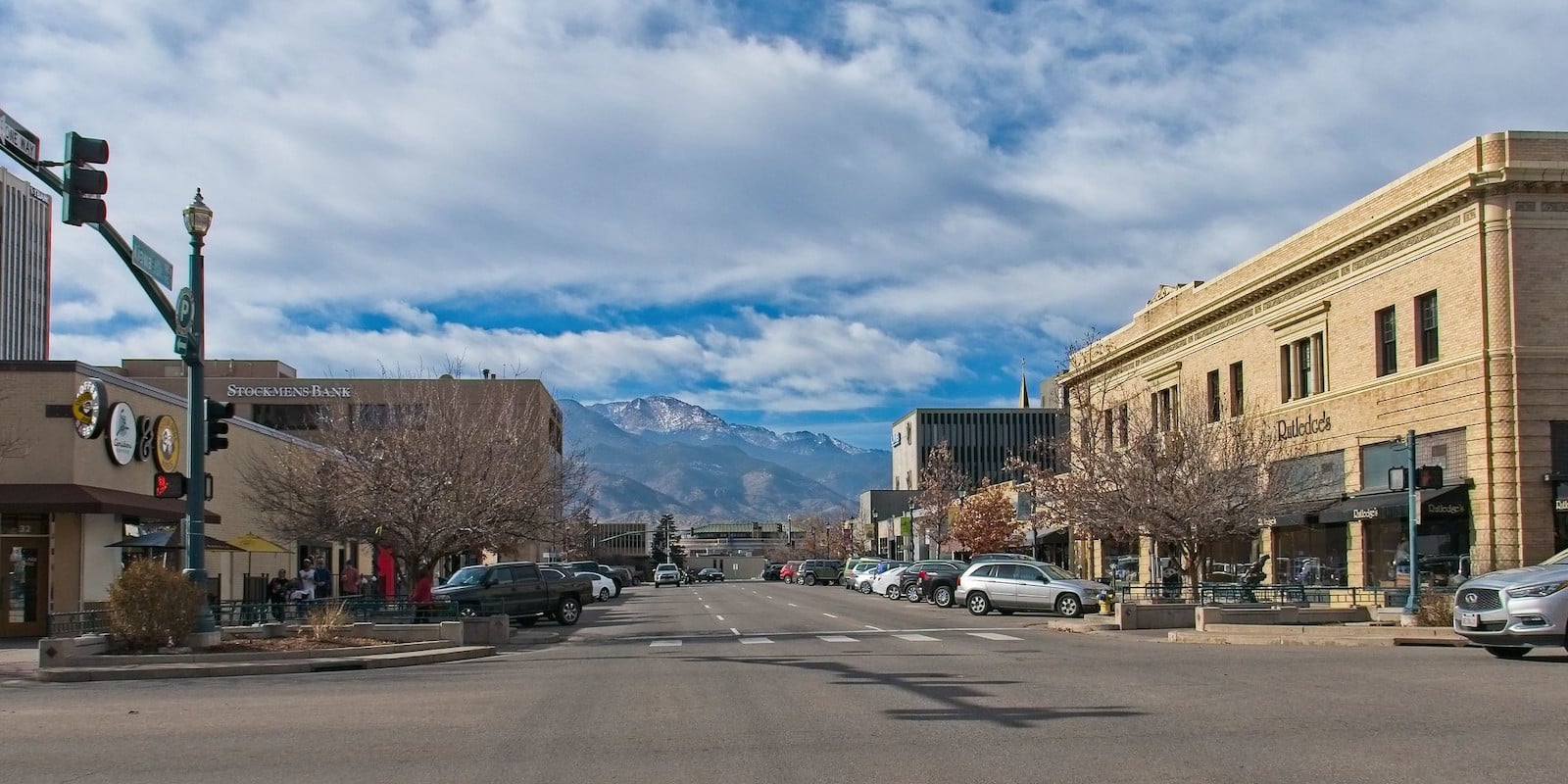Resting under the shadow of Pikes Peak is Colorado Springs. The second largest city in Colorado and along the Rocky Mountains’ Front Range, much of the recent urban growth has been focused on the Downtown area. Updated with big-city amenities, Downtown Colorado Springs still gives off small-town vibes.
Part of the charm of Downtown Colorado Springs is the mixes and mashups of architecture. Beautifully preserved historic buildings have been converted into shops, restaurants, and museums to ensure that some of the city’s 150-year history is never forgotten. Adding to the mix of traditional and historic architecture, new construction is helping Downtown COS reimagine its reputation.
Once overlooked as being a bland business district and strictly conservative community, changes in the Downtown neighborhood mean that more people are turning their attention to the area. With thousands of people either moving or planning to visit Colorado Springs each year, the Downtown area is becoming the highlight of the city. Discover the tallest buildings in Colorado Springs, which make up the unique skyline.

Residents and tourists particularly love the location of Downtown COS because it sits on the doorstep of so many great outdoor scenes. With the Front Range and the Rocky Mountains backdropping the area, visitors will be treated to exceptional views. There are dozens of shops, restaurants, bars, and museums in the downtown district to cater to the crowds.
Often described as particularly family-friendly, you will have no problem spending a full day exploring all that Downtown COSs has to offer. Due to all of the new growth in the area, the neighborhood has attracted young adults to settle in, which is why the median age of residents in Downtown Colorado Springs is 34.6 years.
Most residences are made up of single adults or young families. About 77% of the population is white with African Americans being the largest minority group (6.28%). Downtown Colorado Springs is still building up momentum and with no signs of stopping, this urban destination is guaranteed to become one of the state’s best attractions.
Location

Acting as the Central Business District for Colorado Springs, the Downtown area sits at the heart of the city’s metropolitan area. Although Downtown Colorado Springs is located at the base of the foothills, most of the area is relatively flat with small inclines. The neighborhood itself sits at 6,035 ft (1,839 m) above sea level, which makes it higher than Denver (5,280 ft/1,609 m).
Just minutes from the Southern ranges of the Rocky Mountains, visitors can easily hop between the downtown area and major outdoor attractions like Garden of the Gods and Pikes Peak. Colorado’s capital city, Denver, is 70 miles (113 kilometers) to the north of Downtown COS.
The proximity to Denver makes Downtown Colorado Springs a popular day trip or weekend destination for those who are looking to take a break from the crowds in the capital. Relatively compact, visitors to the downtown area won’t have to worry about always taking a car and finding parking spaces.
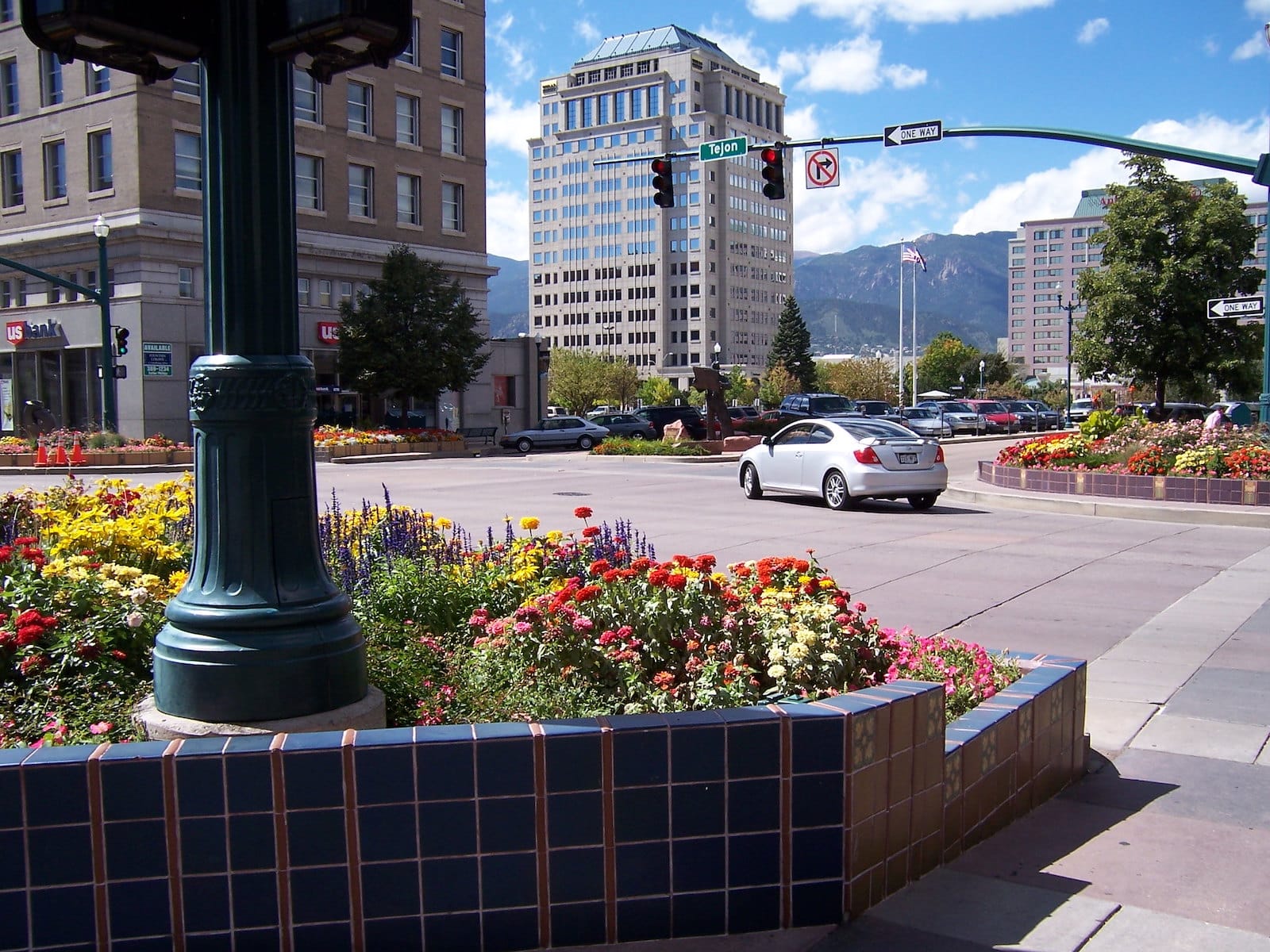
The high walkability and access to public transportation ensure that everyone can easily get around downtown. The layout of the downtown streets is organized by cardinal directions and themed names. Streets that run east and west are named after regional rivers, while the streets that run north and south have been named after regional mountain ranges.
Additionally, the grid design of Downtown Colorado Springs is cut by large boulevards and wide avenues. Most of the shops, restaurants, and bars are lined up one after another. Tejon Street is particularly popular, as is the Old Colorado City District.
To make visiting Downtown even more convenient, the city’s Mountain Metropolitan Transit (MMT) offers free shuttle services throughout the neighborhood. There are 22 stops along Tejon Street and buses run every 7-10 minutes. The shuttles operate 7 days a week from morning to night.
Outside of shuttle hours, visitors can also use ride-share programs to get around the downtown area. Lyft and Uber are the two most popular companies with affordable rates. Bicycle rentals are also provided through the city’s PikeRide program.
History
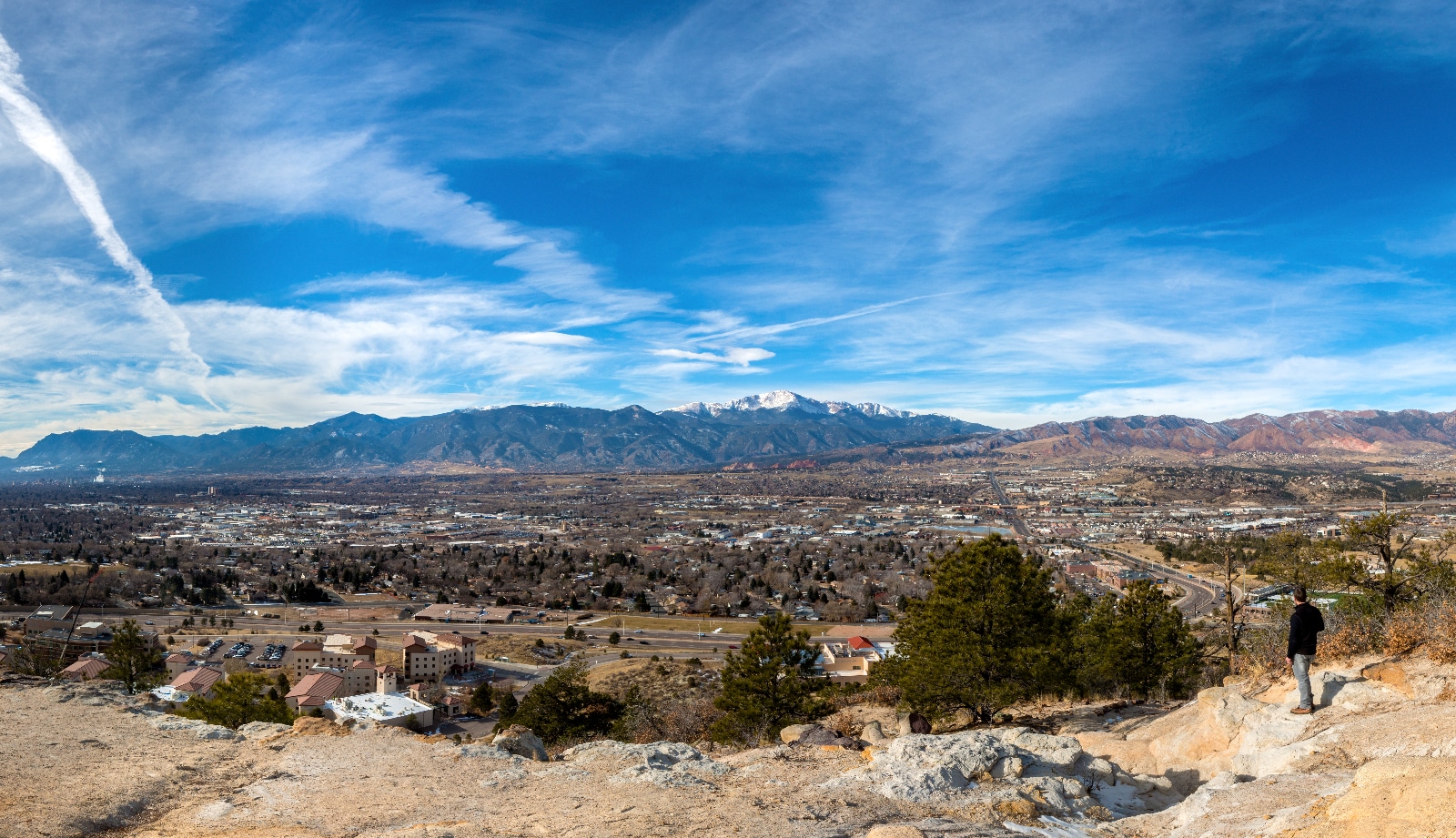
Rich in history, Downtown Colorado Springs first began as a small settlement. Although the Ute, Cheyenne, and Arapaho tribes lived in the area, most settled slightly to the west of Downtown Colorado Springs in the foothills of what is now the Garden of the Gods.
Undiscovered by most outsiders, attention came to the Pikes Peak region in 1806, when the American explorer Zebulon Pike discovered the mountain and attempted to reach its summit. Though unsuccessful in his climb, the mountain was ultimately named after him. In 1859, Colorado City became the first permanent settlement in the Pikes Peak Region.
At the time of its establishment, the settlement was mostly used as a mining supply camp and territorial capital. Only 10 years later, Colorado Springs began its transformation into a tourist destination when General William Jackson Palmer founded railroads and bought land to create Colorado Springs.

During the 1890s, the population boomed to more than 50,000 people after gold was discovered around Pikes Peak. Known as the “City of Millionaires”, the influx of new investments helped solidify Colorado Springs. Beginning in the 1940s, Colorado Springs became heavily militarized with multiple army bases and the Air Force Academy located just outside of downtown.
Adding to the conservative reputation, the area wasn’t seen as a tourist destination until more recently. Having constantly evolved over the centuries, Downtown Colorado Springs isn’t stopping with its plan to reimagine and reshape its future. Ready to experience new cultures and welcome more people, the Downtown area is helping boost the population and tourism in the city.
Main Attractions
Even though Downtown Colorado Springs is just finding its feet as a major tourist destination, there are many interesting and fun attractions for visitors to explore. Although the shops and restaurants are appealing, there are many cultural and historic sites to visit too.
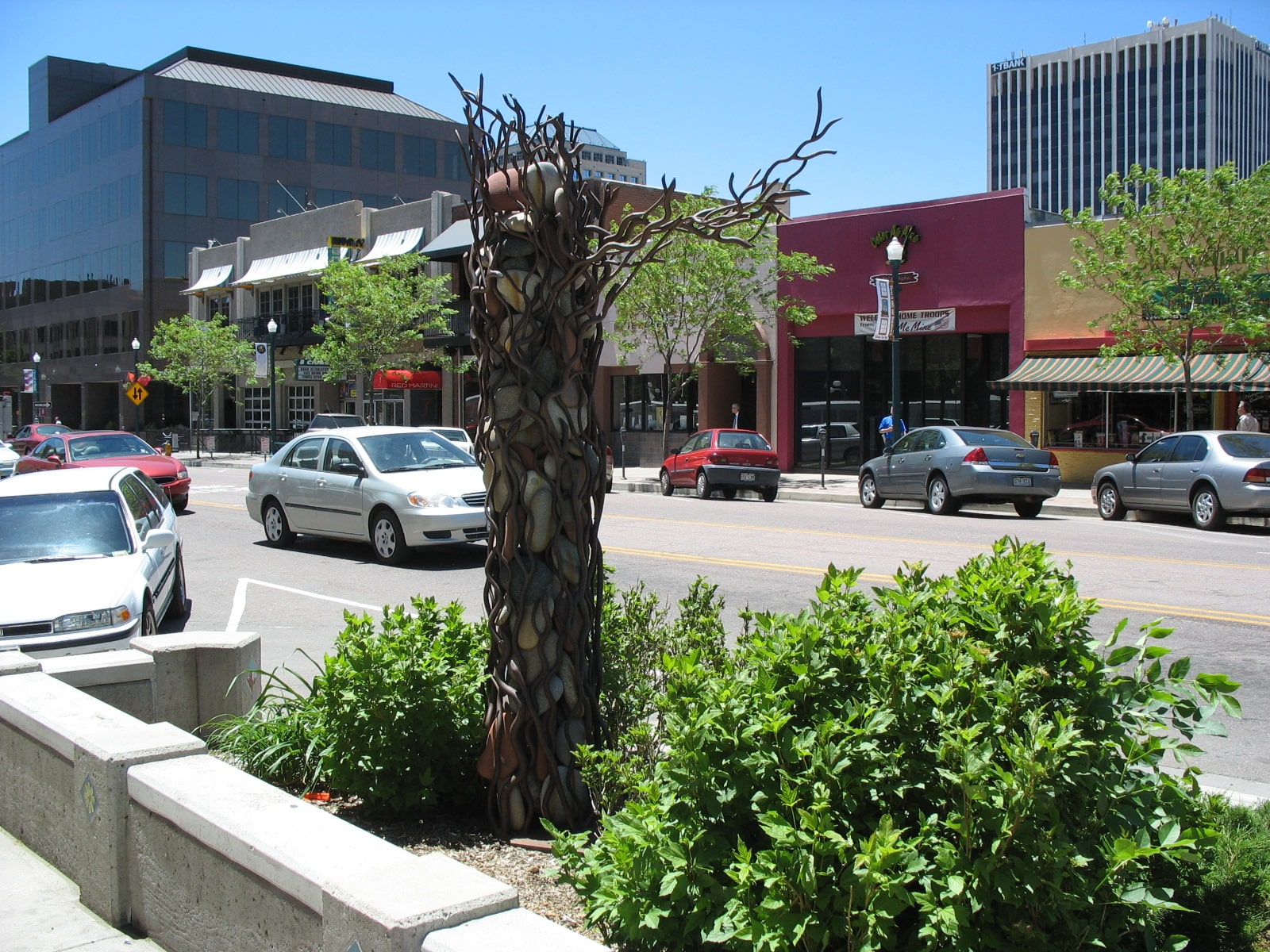
Some of the most popular attractions in Downtown Colorado Springs include the Art Walk, Old Colorado City District, Pioneers Museum, Fine Arts Center, Performing Arts Center, Farmer’s Market, Olympic Training Center and Museum, and Acacia Park. There’s always something happening in Downtown Colorado Springs, which makes it a fun destination to visit in any season.
Downtown Art Walk
Getting acclimated to the high altitude of Downtown Colorado Springs is important for out-of-state visitors. A great activity that allows visitors to explore the downtown area without losing their lungs is the Art Walk. There are about 50 permanently installed art pieces throughout Downtown Denver in outdoor spaces.
Most are large sculptures, but there are a few temporary pieces installed too. During the summer months, visitors can arrange for a guided tour to learn more about each art piece. On the official website of Colorado Springs, there is a free map that can be downloaded so that visitors can take a self-guided tour of the Art Walk.
When guided tours are out of season, the free map is the best way to plan a route to view all of the installations.
Old Colorado City District

The oldest part of the Downtown area is the Old Colorado City District. Once the site of the original mining settlement, the district has been turned into a row of shops, galleries, restaurants, and bars. Located just to the west of Downtown Colorado Springs, visitors will love the rustic charm and upbeat character of Old Colorado City. There’s also a history center for visitors.
In addition to the permanent businesses, there are several events held in Old Colorado City throughout the year. Some of the best events include the First Friday Art Walk, OCC Farmer’s Market, and Territory Days. All events are free and open to the public.
The Pioneers Museum
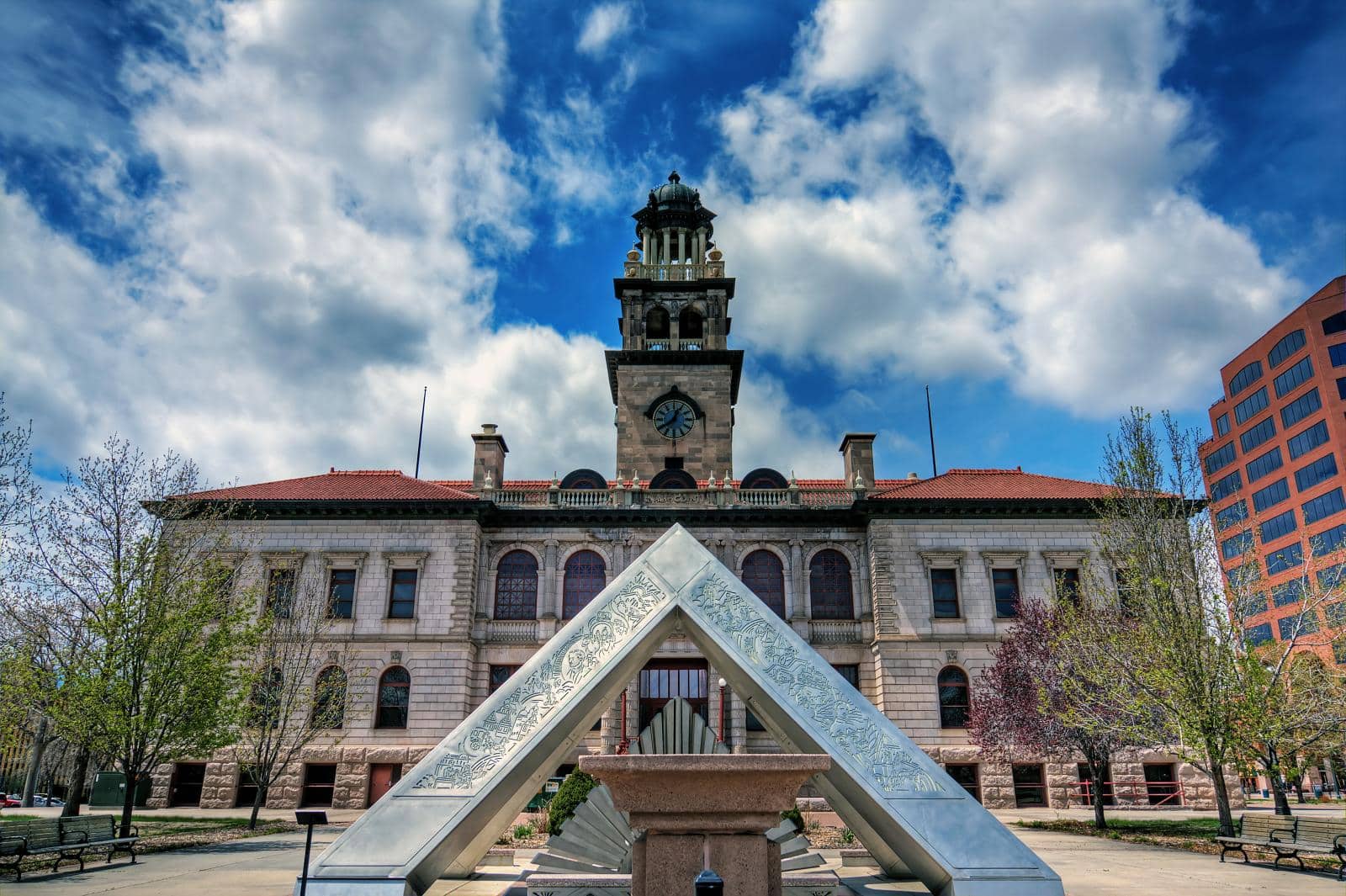
Located in a historic building that was once a courthouse in the early 1900s, the Pioneers Museum is one of the top attractions in Downtown Colorado Springs. Housing more than 60,000 artifacts from the city and Colorado, most of the exhibits in the museum provide the history of the region’s first settlers.
Expanding into the development of COS, visitors can learn more about how the downtown area has changed over the years. The Pioneer Museum is on South Tejon Street and has free admission for all visitors.
Although the museum is friendly to all ages, they do have Family Fun Days with special activities to encourage the younger generations to learn more about the past. For older visitors, there are weekly programs that are open to the public.
The Colorado Springs Fine Arts Center
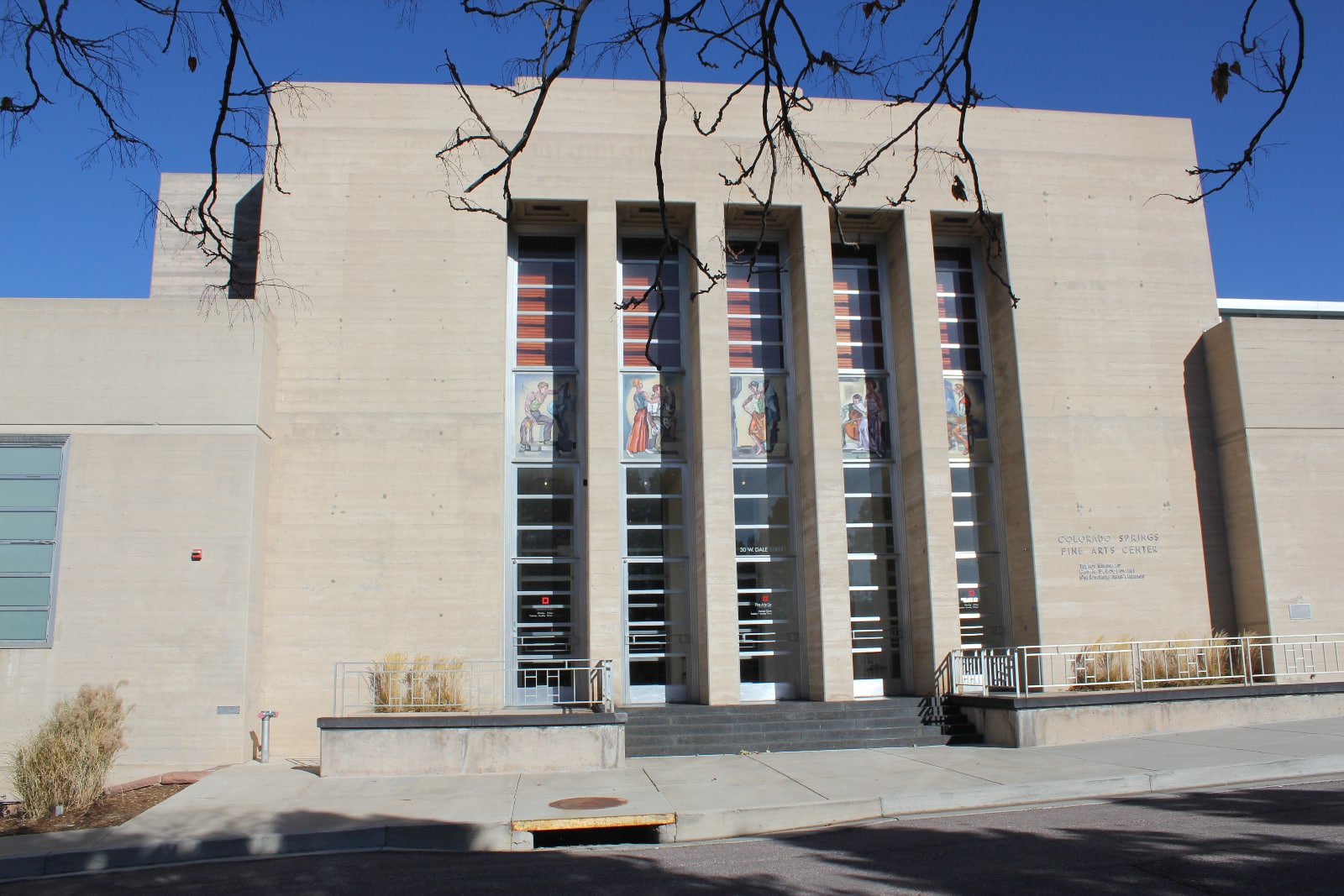
To the north of the Downtown area, the Colorado Springs Fine Arts Center at Colorado College has several unique galleries and world-class art exhibitions. Held within the center are more than 20,000 pieces of fine art from highly acclaimed artists like Georgia O’Keefe, Richard Diebenkorn, and Dale Chihuly.
A large portion of the center’s extensive collection also includes Latin American and Native American art. An important cultural highlight in the Downtown area, visitors can take a guided or self-tour.
Pikes Peak Center for the Performing Arts

For live performances and entertainment in Downtown Colorado Springs, the Pikes Peak Center for the Performing Arts is the place to go. Featuring a large concert auditorium, the center is home to the Colorado Springs Philharmonic Orchestra. Internationally acclaimed for its design and acoustics, there are more than 200 concerts held at the center each year.
Most performances take place in the Great Hall, which seats just over 2,000 people. For smaller events including meetings and receptions, the El Paso Room is used. Out of the hundreds of events held annually at the Pike Peak Center for Performing Arts, many are family or children-friendly. For a full event schedule and ticket sales, visitors should use the main website.
The Colorado Farm and Art Market
Held outside of the Pioneers Museum is the Colorado Farm and Art Market. A summer event, the market is held twice during the week on Wednesdays and Saturdays. Special events include the Winter Wonderland Market in December and twice-monthly spring markets from March to May.
Vendors at the market are locally owned and all produce is grown within Colorado. In addition to the food stalls, there are also handmade and artisan pieces. Providing support to the local community, the market is a hit with adults and kids.
US Olympic & Paralympic Training Center and Museum

A five-minute walk from Downtown Colorado Springs is the US Olympic & Paralympic Training Center and the US Olympic & Paralympic Museum. Consisting of living quarters and special exhibits, visitors can learn just how much work it takes to be an Olympic athlete. With most of the complex acting as an active training center, visitors must arrange for a guided tour.
After being shown a brief film presentation, guides then take visitors around the center. The museum at the complex is open to the public and can be self-guided. Tickets can be purchased on-site or online at the center’s main website.
Acacia Park

Nestled in Downtown Colorado Springs is Acacia Park. With epic views of the mountains and compact, the park is the perfect place to picnic or take a stroll. Specific attractions at the park include Uncle Wilber’s Fountain, which runs every day in the summertime. In the winter, from November to January, there is an outdoor ice skating rink setup.
To learn more about the park and its events, information can be found at the Visitor Hub near the shuffleboard courts. Local guides can provide up-to-date schedules, as well as help visitors plan their itinerary.
An intriguing destination with many attractions, Downtown COS ensures that the area’s unique history, culture, and community stays alive. Visitors can easily spend a lazy day walking the streets or plan an extended vacation to enjoy all the Downtown offers. No matter where you go, Downtown Colorado Springs keeps visitors entertained and on their toes all year round.

